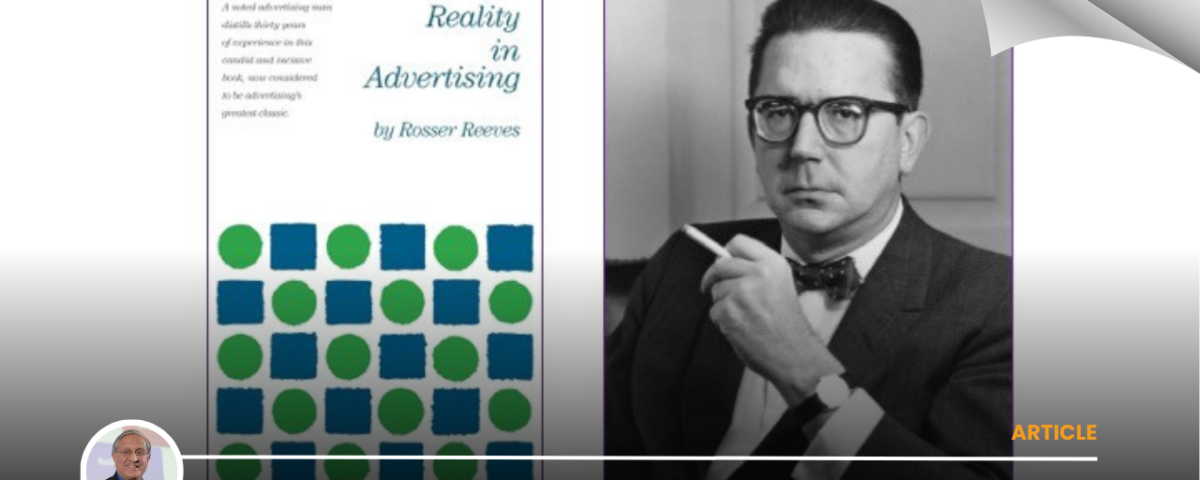(Promoting products that don’t deliver is a waste of money because advertising has to be honest, so wrote Rosser Reeves. Does this apply to public services?).
27th March 2016, ECONOMIC TIMES
General expectations from public services is low. Hence poor service delivery can pass muster by meeting the low expectations. Sometimes a hype is created, for example, when a government wants to signal transformative change, to tom-tom about its performance or during elections. Within a Lakshman Rekha, some hype is acceptable.
In 1961, American advertising practitioner and chairman of Ted Bates, Rosser Reeves, wrote a seminal book entitled Reality in Advertising. His message was that advertising has to be honest by delivery being commensurate with the promise. What I call the ‘Rosser Reeves trap’ states that product promise which is far in excess of product delivery accelerates downfall.
Does under-delivery compared to promise work differently in the case of monopolistic public services than with competitive company products? Does the Rosser Reeves trap apply to public services? I feel that the Rosser Reeves trap threatens everything that makes claims.
The wonderful Aadhar initiative started with excessive hype seven years ago, but was sensibly tempered soon after. Recall the disastrous election results after an excellent ‘Shining India’ advertising campaign because of public perception that the claimed promise had crossed the Lakshman Rekha. Contrast this with the recent Bangladesh foreign policy initiative of 2015, the green revolution of 1970s or the economic liberalization of 1991—great transformations with understated claims in the initial stages.
The Make in India (MII) campaign has been spectacular. The apt logo by V. Sunil of Wieden + Kennedy India, the scintillating advertising campaign, the breath-taking scale of the Bandra Kurla exhibition, the diversity of the foreign delegates, all of these must count as highly savvy. But in the chambers of commerce, the pink papers and on TV business channels, the question is cautiously debated: have things on the ground really changed?
The fact is that the sclerosis of doing business in India has accumulated over decades. The ground realities surrounding MII and many other initiatives do face the Rosser Reeves trap. Not surprisingly everybody has a view on the subject but whatever the truth, it would be foolish to assume that the Rosser Reeves trap is inapplicable.
Business folks are disturbed by the simultaneous negative actions–unexpected tax demands on foreign companies, price control on technology-led GM seeds and a ban on combination drugs. Business folks are enthused by the government decision to use the PAN number as a single enterprise number applicable across multiple laws and authorities to do business more easily. But hang on, the common enterprise number is what Aadhar was supposed to do for individuals? After seven years of wonderful Aadhar, here is what I experienced to effect an address change.
I was naïve to believe that with my Aadhar card, an address change in my case would be fast and speedy. I have had to submit a large number of self-attested copies of sensitive documents to multiple authorities. Here is the gist of my experience.
The Aadhar folks verified my fingerprint and iris, lo and behold, I got the Aadhar card electronically in a few weeks. Fantastic. I was irritated by every other authority seeking ‘an original’ of Aadhar because the electronic print-out looked like a photocopy to them!
BEST wanted the purchase contract of my flat which is my private document! After making enquiries, BEST implemented the new address on their bills. The ration authorities scrutinised the recently changed electricity bill, did a physical check, and changed the address on the ration card. The RTO (driving license) sought authenticated copies of many documents and mailed me a new license only after I demonstrated logistical Terpsichore by being at home to receive the postman with my license.
Over seven months, I achieved success with BEST, MTNL, Income Tax PAN, ration card, gas cylinder and Aadhar by providing each authority with self-attested copies of all the ‘already address-changed’ documents. God knows how many authenticated original documents of mine are filed in these departments. I worry about the implications for privacy and data security!
Then came my passport, banks, mutual funds and depository. The core passport processes are with the Regional Passport Office and Police, requiring one visit to RPO and multiple visits to the Police Station and home-waits for the visit of the postman! The banks wanted a KYC and the MFs wanted me to have a CAN. When all this was done, the MFs texted me a ‘jhatka’ by asking me about FATCA, whatever that meant! One of them wanted my bank statement for the last six months! We have too many regulators and departments, each with their own processes and bureaucracy.
At about this time I attended a public presentation on J-A-M (Jan Dhan-Aadhar-Mobile). Very soon several layers of software will simplify my life to the click of a button. I hope it all works. Meanwhile I worry that about the many authenticated copies of my documents floating around. Where is the promise that my single Aadhar will establish my identity? Why should business folks expect that the PAN as a single identity will work for enterprises? Bloated promises and rhetoric are known to produce unexpected election results. In communicating our public change programs, we must be conscious of the Rosser Reeves trap of the promise getting too far ahead of the product.



